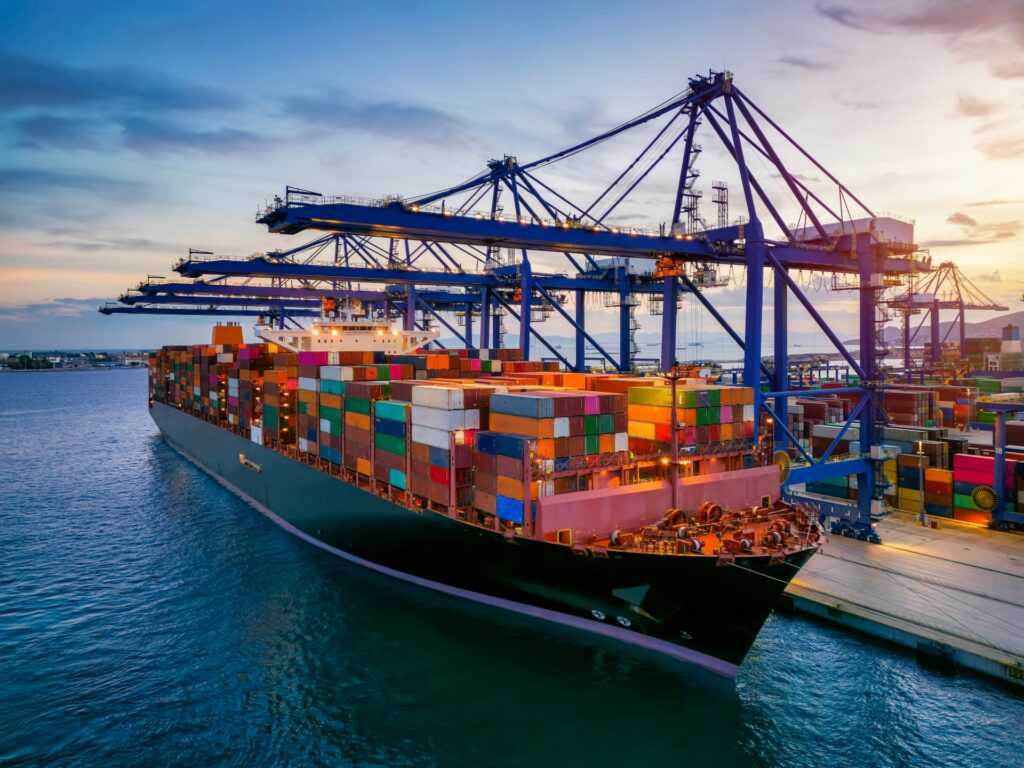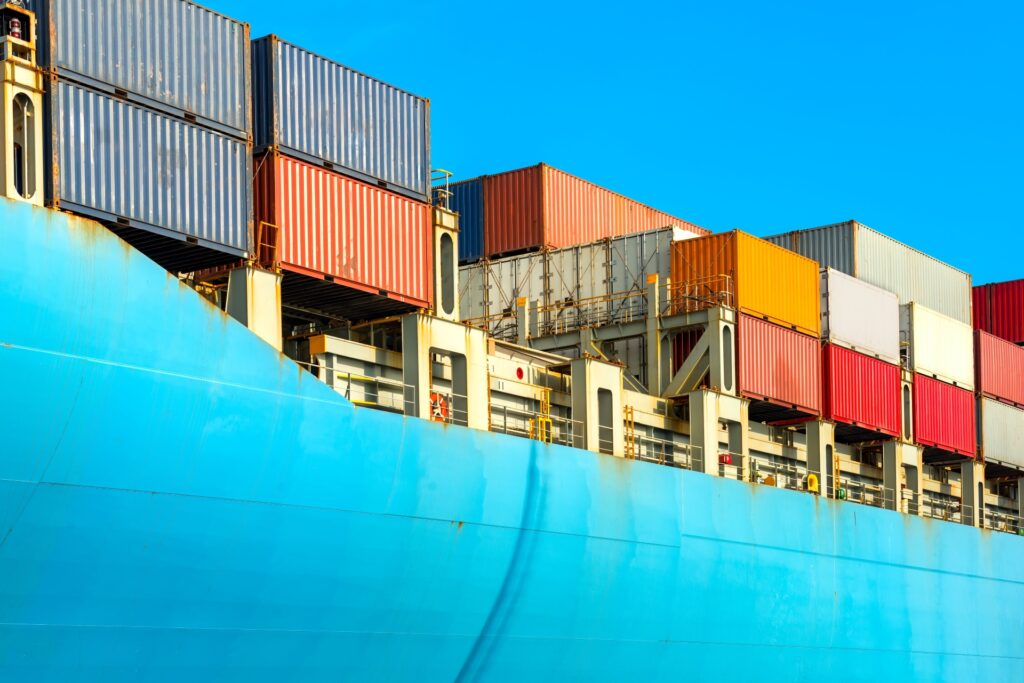How one export advisor demystifies Incoterms® and trade compliance for Ohio’s manufacturers, helping them go global.
International trade isn’t just about moving goods across borders; it’s also about understanding the fine print that gets them there. From navigating HTS codes and Incoterms®, to building export compliance programmes and crafting market entry strategies, the work of an international trade advisor is equal parts technical, strategic, and people focused.
At the Ohio SBDC Export Assistance Network at Youngstown State University, Mariah Hauser supports over 150 manufacturers across 13 counties. She helps them navigate the complexities of global trade – from selecting the right Incoterms® to avoiding costly missteps in export compliance. Whether she’s decoding tariff shifts, training new exporters, or connecting clients to buyers overseas, her focus is clear: turn local know-how into global opportunity for small and mid-sized businesses.
We sat down to talk about the real-world challenges exporters face and how building capability in areas like trade compliance, international logistics, and public sector support is critical for long-term success in global markets.
Understanding the role
“What does this job involve – and is it for me? “
Hi Mariah, what does a typical day look like in your role as an International Trade Specialist?
I’m an International Trade Specialist at the Ohio SBDC Export Assistance Network at Youngstown State University. SBDC stands for Small Business Development Center, and our mission is to help small to mid-sized companies in Ohio grow and thrive – my focus is on helping them expand internationally.
I currently support around 150 clients across 13 counties in Ohio, and together we’re working in over 85 international markets.
As you can imagine, every country brings its own set of regulations, compliance requirements, and documentation challenges – which means no two days are ever the same.
Our office acts as a one-stop shop for exporters. We don’t handle freight forwarding, customs brokerage, or translation ourselves, but we have a strong network of trusted partners we can connect our clients with. We always tell our exporters: if you’re not sure where to start, come to us – if we don’t have the answer, we’ll get you to someone who does.
A typical day for me usually starts by scanning international news and checking updates in the U.S. Federal Register, especially for any changes in tariffs or export regulations. Then I often have meetings with clients – some virtual, some in-person, which I love because it gives me the chance to walk through their facilities and really understand their operations.
Those meetings can lead to a wide range of projects. One day I might be developing a market entry strategy for a company looking to expand into Asia, and the next I could be helping classify products for export or advising on which Incoterms® make the most sense for their shipments.
Recently for example, we hosted in-person training sessions on ITAR (International Traffic in Arms Regulations) and EAR (Export Administration Regulations) compliance – vital for any company dealing with controlled goods. It’s always different, challenging, and honestly exciting.
You mentioned helping clients choose the right Incoterms® for their export cases. This seems to be a common area where many trade professionals are training their teams. How do you typically approach this with your clients?
We approach education around Incoterms® in in a few different ways. One major avenue is through the Ohio Export Internship Program, which I help coordinate at Youngstown State University. We train students on exporting fundamentals, and Incoterms® are a key part of that. After the course, students are placed in internships with our client companies, and often they’re the ones who flag when a company might be using the wrong Incoterm®; that’s when we are brought in to help clarify and correct it.
We also see this come up during our export compliance training, like our recent sessions on ITAR, EAR, and EEI (Electronic Export Information) filing. A lot of companies think they’re using the right Incoterms®, but they’re often confusing them with domestic shipping terms. A common example is ‘FOB Chicago’ vs ‘FOB Rotterdam’ – they’re not the same, and that misunderstanding can lead to issues.
So, whether it’s through student insights or direct consulting, we work closely with clients to help them choose the right Incoterm® based on cost, risk, and shipping responsibilities.

Incoterms® 2020 Certificate
You support clients across a 13-county region – what kinds of businesses do you typically consult, and what are their most common international trade needs and challenges?
Across our 13 counties, we have a strong manufacturing base – I’d say about 98% of the companies we work with are manufacturers. That includes everything from auto parts and rubber components to plastics, aerospace, and even mining equipment. We have quite a few clients who manufacture parts specifically for the mining industry, along with electrical and industrial products.
What I love most is that many of our clients are world leaders in their niche. It’s incredible to see how companies from small towns in Ohio are exporting to 30 or 40 different countries. It really puts into perspective the global impact of local manufacturing.
When these companies come to us, they’re often at different stages of their export journey. Some are just starting – maybe they’ve been selling domestically and are now ready to diversify – while others have exported to nearby markets like Canada or Mexico and want to expand further.
The challenges they face tend to be similar: navigating export regulations, understanding and applying the correct Incoterms®, classifying their products properly, and of course, dealing with changing tariffs. Those are the areas where we step in to support them.
If someone shadowed you for a week, what might surprise them about what goes into advising small businesses on global trade?
What I think surprises most people is how much continued learning is involved in being an international trade specialist.
I’m constantly researching – staying up to date with new regulations, tracking international news, and keeping an eye on changes in trade restrictions, embargoes, and tariffs. Things change fast in this field, and staying current is essential.
I also attend a lot of industry conferences, not just for learning but for networking with others in the trade space. I stay connected to a great community of experts – customs brokers, trade attorneys, and compliance professionals – on LinkedIn. They’re a valuable source of insight. One thing about this role is that you’re never done learning.
Exploring global markets
“How do you help companies go global in a smart and strategic way? “
What goes into conducting actionable market research for an SME looking at export for the first time?
We have a few go-to tools and strategies we use when helping small and mid-sized businesses identify the right markets for export. At Youngstown State University, we use a database called WiserTrade, which allows us to input a company’s Schedule B or HTS code and instantly see the top global markets for that product. That’s often our starting point – it helps us spot opportunities, especially if a company is only exporting to one or two of the top ten destinations for their product.
We also go a level deeper and look at market indicators. For example, with one of our mining equipment clients, we considered where their products are used – in this case, drier climates – so we even researched global rainfall data to identify suitable export destinations. It’s a very tailored process, depending on the industry.
We also work closely with the International Market Support Program offered by the state of Ohio. Through this, we have access to contractors who cover over 125 countries. Once we’ve identified promising markets using trade data and indicators, we engage these local experts to dig deeper – they can conduct in-country research and even help identify potential distributors, suppliers, or end users.
Beyond research, we also guide companies through the entire export process.
If they’re brand new to exploring, we help them build their internal systems – from documentation and compliance to product classification and selecting the right Incoterms®. It’s a very hands-on approach.
Can you share a success story where your research or advice led a company to confidently enter a new international market?
Yes, one that stands out is a manufacturer we work with that supplies product to the mining industry. They were already exporting to a few countries, with Canada being a strong market, but they were looking to expand into South America.
We started by running a WiserTrade report, which identified Chile as a promising market based on demand and export trends. From there, we connected with our local contractors through the International Market Support (IMS) program, who conducted a partner search and identified 15 potential customers in Chile.
Our contractors went a step further – they conducted outreach to those companies, gauged interest, and scheduled virtual meetings for our client. Out of the 15 prospects, 10 meetings took place, giving our Ohio manufacturer the opportunity to present their products, learn about the needs of Chilean mining operations, and assess potential fit.
Ultimately, four of those meetings led to successful partnerships. In many cases, those four Chilean companies were already experienced in international trade and more comfortable importing from the U.S. They also understood the value of investing in a higher-quality product, rather than opting for cheaper, short-term fixes. That alignment made them better suited for our client’s offering – and more prepared to do business across borders.
Compliance and risk management
“Why is compliance such a cornerstone of your work as an International Trade Specialist? “
Export compliance can be overwhelming for small businesses – how do you break down complex topics like HTS codes or EAR classifications in a way that is easy to understand?
Absolutely, especially for companies that are new to exporting. That’s why we take a step-by-step approach, breaking everything down into manageable pieces. If you give them too much at once, it can feel intimidating, and we’ve seen cases where businesses pull back from exporting simply because it seems too complex.
For newer clients, we prefer to start with one-on-one training sessions.
We bring in everyone who touches the export process – shipping, sales, the CFO, even marketing – and walk them through what international trade means for their role. It helps align the team and makes the process less daunting.
We also offer hands-on workshops, where we guide companies through the classification process using real examples. They’ll go onto the official classification websites, try out sample searches, and start to feel more confident navigating the system.
But I’d say my favourite method is still those individual sessions – they allow us to answer specific questions confidentially, tailor the conversation to the company’s needs and make sure they feel supported every step of the way.
What are some of the most common export compliance mistakes you help clients avoid?
One of the most common mistakes we see is misclassification of products. A lot of companies either don’t know how to properly classify their goods using HTS codes, or they’re using outdated or incorrect codes. We’ve had clients come to us with codes that are no longer valid – often because someone assigned them years ago and no one realised that HTS codes are updated regularly.
More recently, we’ve seen cases where clients tell us their international buyers want to change the HTS code, likely to reduce tariffs. That’s a red flag. We always emphasise to our clients that HTS classification must be accurate and compliant, and it’s their responsibility to ensure the correct code is used, not just accept changes by the importer.
Another common area of confusion is Incoterms®. Many businesses either use the wrong term or don’t fully understand what the terms refer to in terms of cost, risk, and responsibility.
For example, using a term like FOB without understanding the full implication could lead to disputes, especially if something goes wrong during shipping. A misunderstanding at that level can become a costly mistake.
That’s why our work is so focused on education and clarity. We want our clients to feel confident and in control of their compliance, not overwhelmed by it.
You’ve completed the Incoterms® 2020 Certification and see the value of it in your day-to-day work. How important is it for exporters to fully understand the Incoterms®? What kind of mistakes or risks do they face if they don’t?
It’s extremely important. One of the most common mistakes we see is companies assuming that domestic shipping terms are the same as international Incoterms®, which they’re not.
The biggest risk comes down to costs and liability. Many companies don’t fully understand what the Incoterms® cover. For example, Incoterms® don’t address title transfer, and not all of them include insurance. So, part of our role is helping exporters choose terms that align with their risk tolerance and shipping strategy.
If they want coverage during transit, we might recommend using terms like CIF or CIP, which require the seller to provide insurance. That can be crucial if goods are damaged, lost, or even fall overboard during ocean freight – which does happen.
At the end of the day, understanding Incoterms® isn’t just about logistics, it’s about protecting your business. We want to make sure our clients know where their responsibility ends, where the buyer’s begins, and how to avoid costly surprises.

Incoterms® 2020 Certificate
Education, seminars, and community impact
“Your work also involves teaching and outreach – how does that fit into your day-to-day? “
You organise export seminars and work with the Ohio Export Internship Program – how do these initiatives support long-term trade education in your region?
The Ohio Export Internship Program is one of the most rewarding parts of what we do. Each spring semester, we train college students on the fundamentals of exporting through a course that’s structured around five key modules: documentation, duty drawback, Incoterms®, export compliance, and international terms of payment. We dive deep into those; we use real-world examples and hands-on workshops so that students are actively applying what they’re learning.
The goal is twofold: to support Ohio exporters by sending them skilled interns who can help grow their international sales, and to educate the next generation of trade professionals. International trade is such a niche field, and there aren’t many academic programmes that focus on it directly, so this initiative really fills a critical gap. What’s exciting is that many of our students go on to full-time careers in global trade, which helps build long-term expertise in our region.
Beyond the internship programme, we also organise seminars and webinars for continued education. Our webinars cover quick, focused topics, while our seminars go much deeper. For example, just recently we hosted a two-day, in-person training on ITAR and EAR compliance. We brought in five companies, with each sending multiple employees, and the feedback was incredibly positive.
It was especially meaningful because these companies had specifically asked us for this training. Being able to not only provide the education but also continue supporting them afterward – like helping with registration or compliance questions – is a big part of how we add value.
How important is public sector support – like State of Ohio programmes – in helping businesses overcome global barriers?
Public sector support is critical, especially for exporters. In my role, we’re focused on helping companies get their products out, but I’d love to see more support for importers too.
Importing and exporting go together, and a lot of our clients import components, add value, and then export. But when it comes to importing, there’s less help out there, and even though I know a lot about exporting, there are areas on the import side which I can’t always assist with. That’s a goal of mine – I’d like to take the Licensed Customs Broker exam so I can better understand that side and offer more support.
As for Ohio’s export programmes, they’re helpful. The International Market Support (IMS) program connects us with contractors in over 125 countries. They help our clients do market research and even find potential customers. Each year, around 10 to 20 of our clients use this to expand internationally.
The Ohio Export Internship Program is another big one. Many smaller businesses don’t have someone dedicated to exporting, they might have someone doing sales, marketing, and finance all at once. So, placing a trained student intern at the company can really help.
Then there’s IMAGE – the International Market Access Grant for Exporters. That’s a grant through the state of Ohio and SBA’s STEP programme. If a company does something like attend an international trade show or a trade mission, the grant can reimburse up to $10,000 or 50% of the cost. That makes it easier for companies to attend events they might not otherwise afford. We’ve had clients use it for shows like FABTECH in Mexico, where they can meet new customers.
Advice for aspiring international trade advisors
“What would you tell someone who wants to do what you do? “
If someone is interested in a role like yours in export consulting or public-sector trade development, where should they start?
I followed the path I now recommend to others. I went through the Ohio Export Internship Program when I was a college student and was placed with a mid-sized manufacturer. During that internship, I got to work on real, hands-on projects – I helped create their export compliance manual, classified products, and reviewed their Incoterms®.
At the end of the internship, they offered me a full-time role, and I worked there for a few years as their Global Trade Compliance Specialist.
That experience gave me a full picture of what international trade looks like inside a manufacturing company; how different departments work together, and how compliance, logistics, and documentation all fit into the process.
I use that knowledge every single day in my current role. For anyone interested in this field, especially in a consulting or advisory role, I’d recommend working for a small to mid-sized manufacturer first. It’s the best way to understand the full scope of exporting and it gives you practical insight that you can bring into any future role.
Looking ahead, what skills or knowledge areas will be most important for future trade specialists supporting small and mid-sized exporters?
The biggest thing – and what would probably surprise most people if they shadowed me – is how much I’m constantly learning. That’s the most important trait for this role: you must be curious and always willing to adapt. I work with over 150 companies across 13 counties, and each one is different, with different industries, products, countries, and regulations.
I also attend conferences, pursue certifications, and stay up to date so I can better support the companies we serve. It’s not a role where you learn something and you’re done – things are always changing in international trade.
Another key skill is being detail oriented. Whether you’re classifying HTS codes, reviewing a letter of credit, or interpreting EAR and ITAR regulations, the details matter. You need to be organised and thorough, because even small mistakes can have big consequences in trade.
In terms of knowledge areas, I’d recommend two main ones:
- Incoterms® rules:…
At the end of the day, everyone is moving freight and knowing how and when to use Incoterms®, and the costs and responsibilities tied to them is crucial.
- Export compliance: It’s niche, but it’s incredibly important. A lot of companies don’t fully understand it, so you need to be someone they can lean on for guidance through complex procedures and regulations.
Continuous learning seems to be a big part of your role as an international trade specialist. What resources or publications do you rely on to stay updated with international trade?
One of the main resources I use is the U.S. Federal Register. It posts updates on export regulations and other trade-related topics. I’ve signed up for email alerts, and you can customise them by keywords like ‘export regulations’ or ‘trade’, so I get notified whenever something relevant is published.
Another resource I use is the Daily Bugle, which is a daily newsletter from Full Circle Compliance run by Jim Bartlett. It’s like the Federal Register but compiles all the key updates in one place, which also makes it easy to stay on top of things.
I also lean on professional organisations. I’ve earned certificates through NASBITE International and ICC Academy and attending conferences by groups like the International Compliance Professionals Association (ICPA) are a great way to stay current and connect with others in the field.





